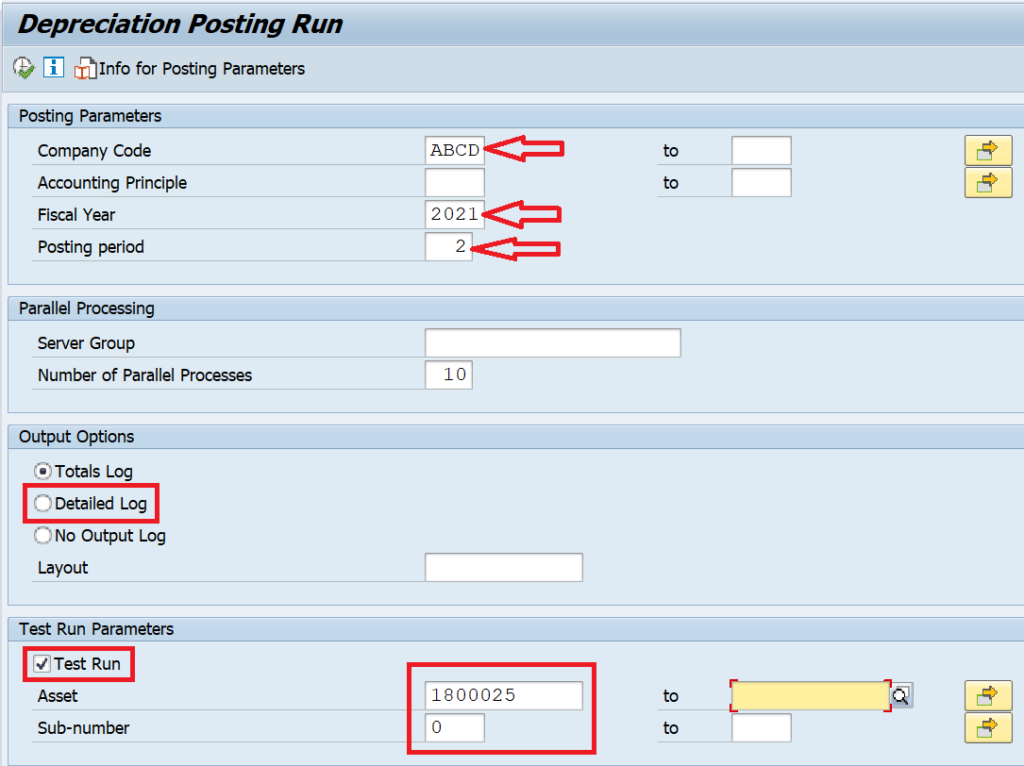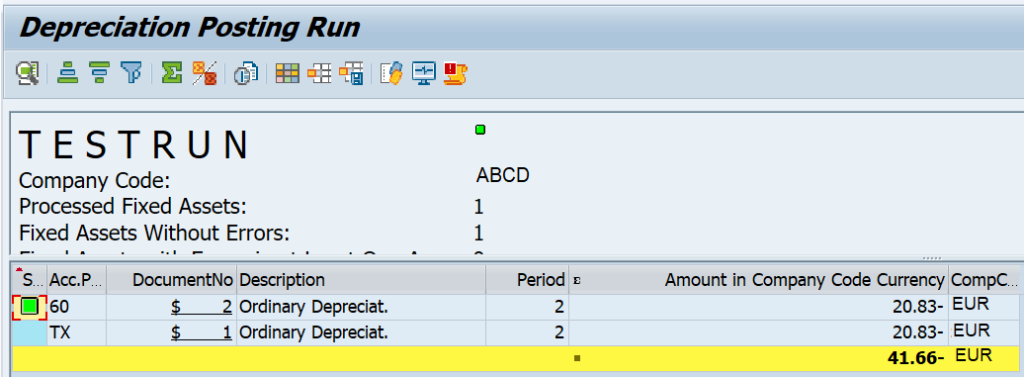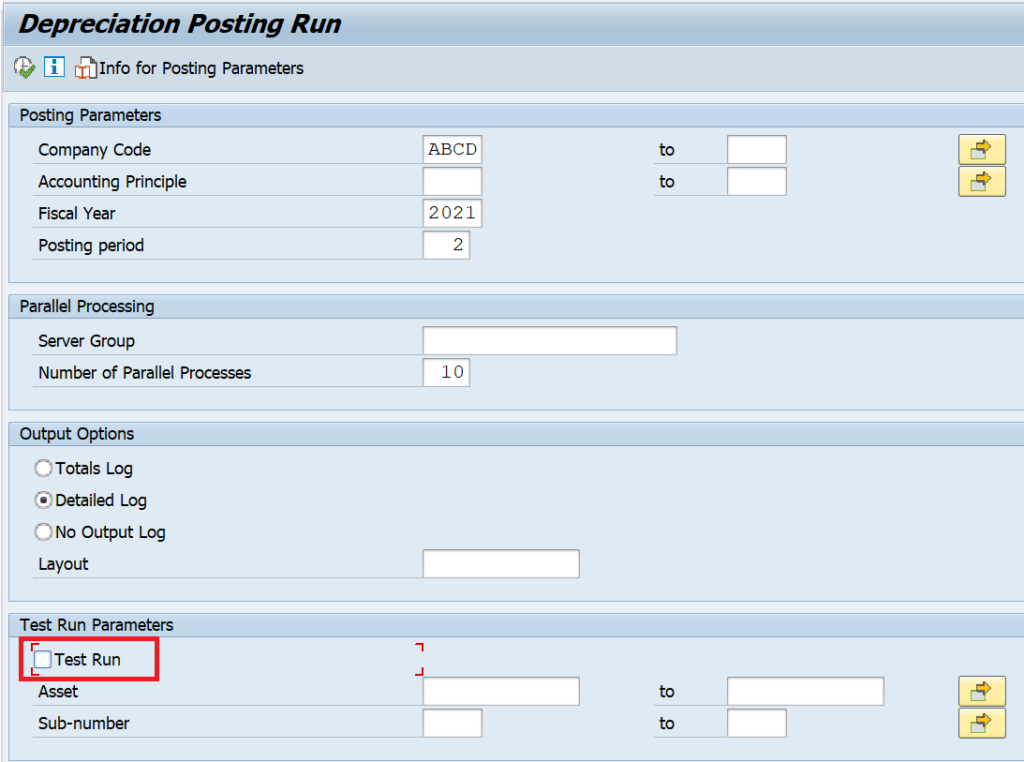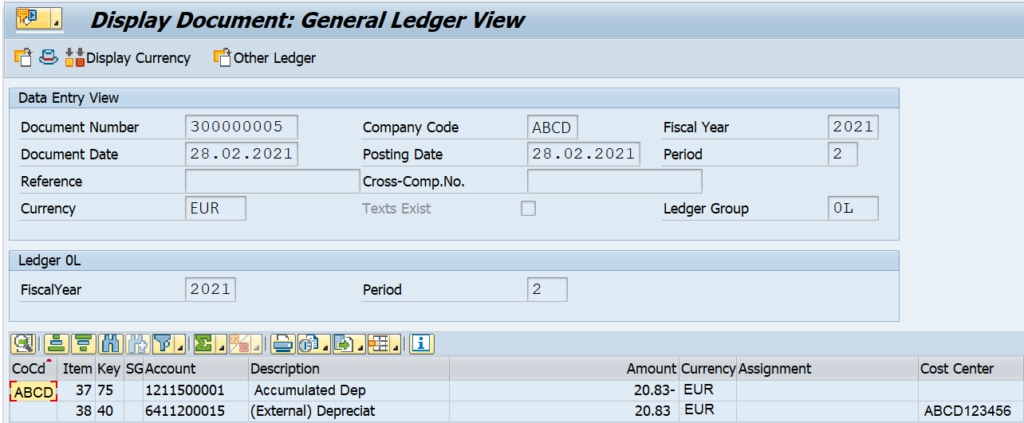AFAB: Execute Depreciation Run in SAP
Hi Everyone, I hope you are doing well and staying safe! I have been posting articles related to asset accounting lately. The idea is to continue the flow so that you can understand the complete end-to-end process. In the last few articles, I explained how you can create a new fixed asset, acquire it using ABZON or purchase it from a vendor using F-90. Today, I will show you how you can post depreciation entries using tcode AFAB. This process is known as Depreciation Run in SAP.
Before I proceed further, it is really important to understand the basics of depreciation and why do we need it? Depreciation is an amount that relates to the monetary value of an asset that decreases over time due to wear and tear. For example, if you buy any new machine and use it for 5 years, it will lose its value over time due to wear and tear. This reduction in value is known as Depreciation. Any organization that manages fixed assets is required to post depreciation as it helps in getting the real value of an asset.
In general, you calculate the depreciation monthly for each fixed asset. It’s also the same in SAP where you execute the transaction code AFAB to post depreciation amounts every month. Instead of executing AFAB manually, many organizations schedule an automatic background job to process it monthly. In this tutorial, I will show you how you can execute the depreciation run in SAP and post the depreciation accounting entries for an asset. Without further ado, let’s begin!
Table of Contents
Step 1: Create and Acquire an asset
To calculate the depreciation amount for any asset, you need 2 things. One is the asset master for which you are calculating the depreciation amount and the acquisition value. You can create a new asset in AS01 for any asset class. Similarly, after creating an asset, you can post the acquisition value to the same asset.
Now, you already know that there are 2 ways of doing it. You can use either ABZON (Offsetting Clearing Account) or F-90 (From Vendor). The system will calculate the depreciation amount on the basis of the acquisition value and the useful life of an asset. For example, in my last post, I created one asset 1800025-0 with a useful life of 4 years and acquired it from the vendor for 1000 euros in the month of February (also the capitalization date).
Step 2: Display Asset Values
To display the asset values, you can use either the asset explorer report AW01N or execute AS03. If you are using AS03, enter the asset code, company code, and click on the Asset Values button.

In the screenshot given below, you should be able to see the asset values. In this example, the acquisition amount is 1000 euros because I acquired it from a vendor using tcode F-90. Apart from the acquisition amount, you should also see the Depreciation amount. This is the planned depreciation amount for the current fiscal year 2021. You can click on the ‘Posted Values‘ tab to display the planned and posted depreciation values for each month or period.

If you navigate through the Depreciation values section, you can see that the depreciation amount for all the periods has a Planned status. It means that the depreciation has not yet been posted for these periods. Also, you may be wondering how the system is calculating the depreciation amount of 20.83 euros for each period. It’s simple, I’m using the straight-line method and it calculates the amount on the basis of acquisition value and useful life.
For this asset, the useful life is 4 years, which converts to 4×12=48 months. The acquisition value of this asset is 1000 euros.
So, Depreciation Amount for each period = (1000/48) = 20.83 euros.

Step 3: Execute AFAB in Test Mode for Depreciation Run in SAP
The next step is to execute the transaction code AFAB to process the depreciation run in SAP.
On the selection screen, you need to enter the company code, fiscal year, and posting period for which you want to execute the depreciation run. In the Output Options section, you have an option to select Totals Log, Detailed Log, and No Output Log. If you select Totals Log, the report output will display the total amount for each depreciation area. If you select Detailed Log, then the report will display the depreciation values for each fixed asset.
It is always recommended to run the depreciation in the Test Mode before doing it in the Production mode. It will help in finding out any posting related issues in the test run mode. Also, in the test mode only, you can enter the asset number. This way you will be able to see if there are any issues with the asset number.

After entering the data on the selection screen, click on the Execute button to process the report in the test run mode. If you see the green status in the report, it means there are no issues and you can post the depreciation amount in production mode. But, in case you see a red status, then you need to resolve all the errors first before proceeding further. The errors will be listed in the last icon (Yellow File) on the navigation bar.

Step 4: Execute AFAB in Production Mode for Depreciation Run in SAP
Once you are clear in the test run mode, you can go back to the AFAB initial screen and remove the Test Run checkbox. Also, when you are running this transaction in the production mode, you should remember that it will not post depreciation for a single asset. Rather, this transaction will post depreciation for all the asset accounts. In other words, you should not enter any asset number here when you are running it in production mode.
Click on the ‘Execute‘ tab in the navigation bar and then click on the ‘Execute in Background‘ to process it further. Once done, it will create a background job that you can track in tcode SM37.

Once the status of the background job is successful in SM37, you should be able to see the posted depreciation values in AW01N or AS03. This time, the system will display the status as Posted for Period 2.

You can double click on the same row, and it will take you to the next screen. The next screen is basically a depreciation run log where it will display the accounting document for the posted depreciation. In this example, accounting document 300000005 has been posted.

Step 5: Display the Depreciation Accounting Document in FB03
As you already know that to display any accounting document, you need to use tcode FB03. Execute FB03 and enter the document number, company code, and fiscal year.

The accounting document will display the 2 line items for this asset. It will debit the depreciation account (P&L) and credit the Accumulated Depreciation account (Balance Sheet). The cost center at the expense (P&L) account line item is picked automatically from the asset master data.

The following accounting entry is posted during depreciation run:
Ordinary Depreciation P&L Account Dr.
Accumulated Depreciation BS Account Cr.
That concludes the tutorial on Depreciation Run in SAP. I hope you have learned something new today. Please do share this tutorial with others and reach out to me in case of any queries.




Thank you for your detailed explanation.
I have a basic question.
For example, depreciation proceeded until February, but what would be the result of skipping March and depreciation in April?
If you skip the depreciation run in March and continue with the depreciation run in April, then the system will automatically calculate & post the depreciation amounts for both the months of March & April.
how to see depreciation GL in SAP
You can see the assigned depreciation GL accounts in the configuration in t-code AO90.
WHEN WE DO GENERAL LEDGER ACCOUNTS FOR ASSET ACCOUNTS WHY DO WE DONT GIVE “POST AUTOMATICALLY” BUT THOSE ACCOUNTS ARE BEING POSTED IN THE BACKGROUND
Because Asset accounts are created as Reconciliation accounts for assets. And all the reconciliation accounts are always posted automatically in the background. The system allows you to choose only 1 option, whether it’s recon or posted automatically.
[…] had also posted the depreciation amount of $62.50 for 3 periods using t-code AFAB. Since I already have the acquisition value and […]
[…] AFAB: Execute Depreciation Run in SAP […]